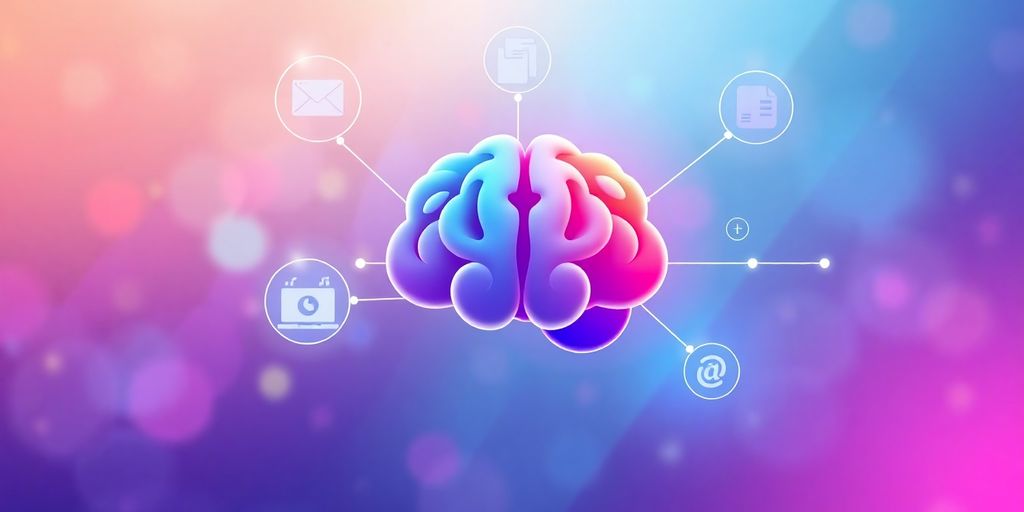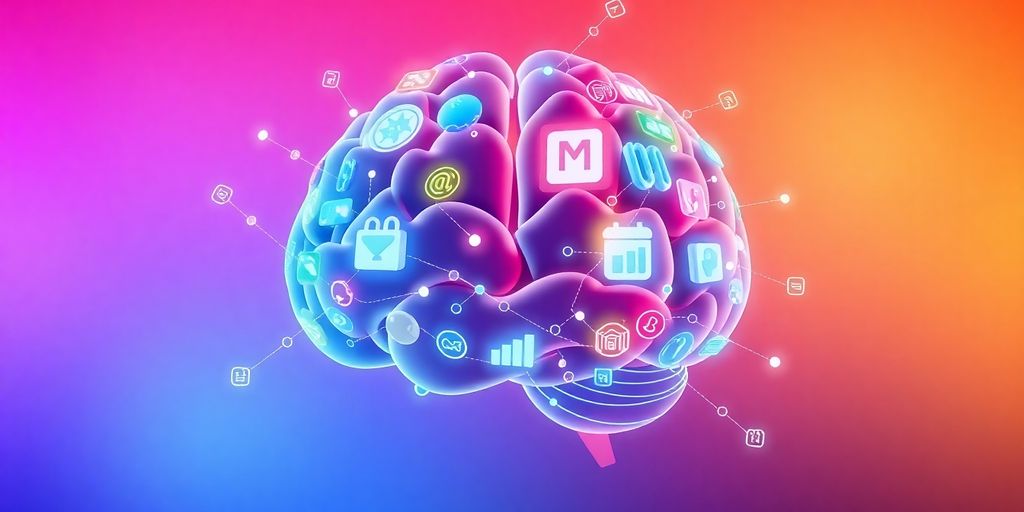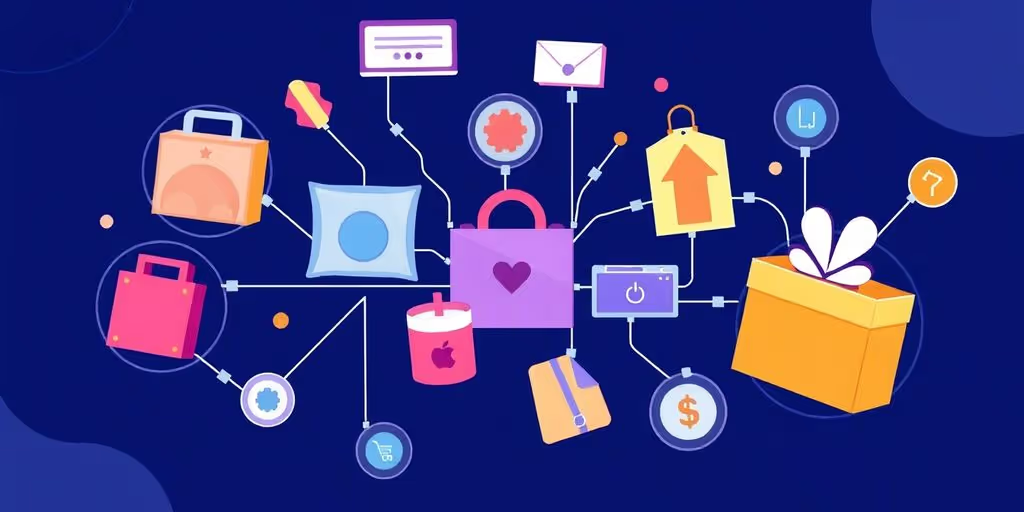"Cross-Selling Intelligence: AI-Powered Product Pairing for Higher Order Values"
Explore how Artificial Intelligence enhances cross-selling strategies for increased order values.
In today's fast-paced e-commerce landscape, businesses are constantly seeking ways to boost their sales. One effective strategy is cross-selling, which involves suggesting complementary products to customers. With the rise of Artificial Intelligence, companies can now harness data-driven insights to create smarter product pairings. This not only enhances the shopping experience but also increases the average order value. Let's explore how AI can transform cross-selling strategies and drive sales growth.
Key Takeaways
- Artificial Intelligence helps understand customer preferences and behaviors better.
- AI can identify products that complement each other, making cross-selling more effective.
- Using data analytics, businesses can optimize their marketing campaigns for better results.
- Machine learning algorithms can automate product recommendations based on past purchases.
- Integrating AI into e-commerce platforms can streamline operations and improve customer engagement.
Leveraging Artificial Intelligence for Product Pairing
AI is changing how businesses approach product pairing. It's not just about guessing what goes well together; it's about using data to make smart recommendations. This can lead to higher sales and happier customers.
Understanding Customer Behavior
AI can dig into customer data to figure out what people really want. It looks at past purchases, browsing history, and even things like how long someone spends looking at a certain product. This helps to create a detailed picture of each customer's preferences.
Identifying Complementary Products
Once you understand customer behavior, AI can identify products that go well together. For example, if someone buys a camera, the AI might suggest a lens, a tripod, or a memory card. It's about finding those natural pairings that customers might not even think of themselves.
Enhancing User Experience
AI-powered product pairing can make shopping easier and more enjoyable. Instead of having to search for related items, customers see relevant suggestions right away. This can save time and make them more likely to buy more stuff. It's all about making the experience as smooth as possible.
Think of it like this: AI is like a really good salesperson who knows exactly what you need before you even ask. It's about anticipating needs and making relevant suggestions that add value to the shopping experience.
Data-Driven Strategies for Cross-Selling
Cross-selling can feel like guesswork, but it doesn't have to. The secret sauce? Data. Instead of relying on hunches, we can use real information to figure out what customers are likely to buy together. It's about making smarter decisions based on what's actually happening, not what we think is happening.
Utilizing Customer Data
Customer data is gold. Seriously. It tells you everything from what people are buying to how they're using your products. The trick is collecting it, organizing it, and then actually using it. Think about it: purchase history, browsing behavior, demographics – it all paints a picture. You can use a robust deployment and management functionality to manage all of this data.
Analyzing Purchase Patterns
Okay, so you've got the data. Now what? Time to find patterns. What products are frequently bought together? Are there certain customer segments that are more likely to buy specific combinations? This is where data analysis comes in. It's not just about looking at numbers; it's about understanding the story they tell. For example:
- Customers who buy product A also buy product B 40% of the time.
- High-value customers are 2x more likely to purchase product C after buying product A.
- Customers who browse product D but don't buy it often purchase product E instead.
Optimizing Marketing Campaigns
All this data and analysis is useless if you don't do anything with it. That's where marketing campaigns come in. Tailor your ads, emails, and website recommendations based on the insights you've uncovered. Show customers products they're actually likely to want, not just random stuff.
By aligning product, sales, and marketing through a unified data infrastructure, you can create targeted campaigns that resonate with customers and drive sales. It's about connecting the dots between what customers do and what you offer, leading to more effective and profitable cross-selling strategies.
The Role of Machine Learning in Sales Optimization

Machine learning (ML) is changing how sales teams operate, offering ways to boost efficiency and close more deals. It's not just about automating tasks; it's about making smarter decisions based on data. Let's explore how ML is making a difference.
Predictive Analytics for Sales
ML algorithms can analyze historical sales data to predict future outcomes. This allows sales teams to focus on leads with the highest probability of conversion. For example, by looking at past customer interactions, purchase history, and demographic data, ML can score leads and identify those most likely to become customers. This helps sales reps prioritize their efforts and tailor their approach to each prospect. It's like having a crystal ball that shows you where to focus your energy for the best results.
Automating Recommendations
ML can automate product recommendations, making it easier for sales reps to suggest the right products to customers. This is especially useful in cross-selling and upselling scenarios. Imagine a customer buying a new laptop; ML can suggest accessories like a mouse, keyboard, or extended warranty based on what similar customers have purchased. This not only increases the average order value but also improves the customer experience by providing relevant suggestions. It's like having a personal shopping assistant that knows exactly what each customer needs.
Improving Sales Forecasting
Accurate sales forecasting is crucial for planning and resource allocation. ML algorithms can analyze historical sales data, market trends, and economic indicators to generate more accurate forecasts than traditional methods. This helps companies make better decisions about inventory management, staffing, and marketing spend. It's like having a weather forecast for your sales pipeline, allowing you to prepare for sunny days and brace for potential storms.
Machine learning is not a replacement for human sales reps, but a tool that empowers them to be more effective. By automating routine tasks and providing data-driven insights, ML frees up sales reps to focus on building relationships and closing deals.
Integrating AI into E-Commerce Platforms
Integrating AI into e-commerce platforms isn't just a tech upgrade; it's about fundamentally changing how businesses interact with their customers. It's about making the shopping experience smarter, more personal, and ultimately, more profitable. Let's break down how this works.
Seamless Integration Techniques
Getting AI into your e-commerce setup doesn't have to be a headache. The key is to start small and scale up. Think about using APIs (Application Programming Interfaces) to connect AI services to your existing platform. Many AI providers offer pre-built integrations that can be plugged in with minimal coding. For example, you might start with a chatbot for customer service and then add AI-powered product recommendations later. It's all about finding the right fit for your current infrastructure and business needs. Consider these steps:
- Assess your current platform's capabilities and limitations.
- Identify specific areas where AI can provide the most immediate impact.
- Choose AI solutions that offer flexible APIs and integration options.
Enhancing User Interfaces
AI can make your e-commerce site way more user-friendly. Imagine a website that adapts to each visitor's preferences, showing them exactly what they want to see. AI-powered search can understand natural language, so customers can find products even if they don't know the exact name. Chatbots can provide instant support, answering questions and resolving issues in real-time. And personalized recommendations can guide shoppers to discover new items they might love. It's all about creating a more intuitive and engaging experience.
Real-Time Data Processing
One of the coolest things about AI is its ability to process data in real-time. This means you can analyze customer behavior as it happens and make instant adjustments to your website. For example, if a lot of people are looking at a particular product, you could highlight it on your homepage. Or, if someone abandons their cart, you could send them a personalized offer to encourage them to complete the purchase. Real-time data processing allows you to be proactive and responsive, which can significantly boost sales. AI is revolutionizing ecommerce by enabling automation.
Real-time data processing is a game-changer. It allows businesses to react instantly to customer behavior, optimizing the shopping experience and driving sales in ways that were never before possible. This responsiveness is key to staying competitive in today's fast-paced e-commerce landscape.
Case Studies of Successful AI Implementations
Retail Success Stories
Okay, so let's talk about some real wins. I was reading about this one retail chain – I think it was Target, but don't quote me on that – that started using AI to predict what shoppers would buy together. They analyzed tons of transaction data and found some crazy correlations, like people who buy diapers also tend to buy beer. Who knew? Anyway, they started placing those items closer together in the store, and sales went up. It's all about finding those hidden connections and making it easier for customers to buy more stuff. Another retailer used AI to personalize product recommendations on their website. The results were pretty impressive.
- Increased average order value by 15%.
- Boosted conversion rates by 10%.
- Improved customer satisfaction scores.
B2B Applications
It's not just retail that's getting in on the AI action. B2B companies are also finding ways to use AI to boost sales. For example, a software company used AI to identify which of their customers were most likely to churn. They analyzed data like usage patterns, support tickets, and customer feedback to predict who was at risk. Then, they proactively reached out to those customers with special offers and support, and they were able to reduce their churn rate by a significant amount. I think it was something like 20%? Another company used AI to generate leads. They trained an AI model on their existing customer data and used it to identify new prospects who looked like their best customers. It's all about finding those ideal customers and targeting them with personalized marketing messages.
Impact on Customer Retention
AI can really help keep customers happy and coming back for more. One of the coolest examples I saw was a subscription box company that used AI to personalize the contents of each box. They analyzed data like customer preferences, past purchases, and ratings to create boxes that were tailored to each individual subscriber. This led to higher customer satisfaction and lower churn rates. It's all about making customers feel like you really understand them and are giving them something special. Another company used AI to improve their customer service. They implemented a chatbot that could answer common questions and resolve simple issues. This freed up their human agents to focus on more complex problems, and it also reduced wait times for customers. The result? Happier customers and lower support costs. The use of AI customer stories is growing rapidly.
AI is not just a tool for increasing sales; it's a way to build stronger relationships with customers and keep them loyal for the long haul. By understanding their needs and preferences, and by providing them with personalized experiences, you can create a level of customer satisfaction that was simply not possible before.
Challenges in Implementing AI Solutions

Okay, so you're thinking about adding some AI magic to your cross-selling strategy? Awesome! But let's be real, it's not all sunshine and rainbows. There are definitely some hurdles to jump over. It's like when I tried to bake a cake from scratch – looked easy on TV, but the reality was a flour-covered disaster. AI implementation can feel a bit like that if you're not prepared.
Data Privacy Concerns
First off, data privacy is a huge deal. You're dealing with customer info, and you need to be super careful about how you collect, store, and use it. Think GDPR, CCPA, and all those fun acronyms. One wrong move, and you're facing fines and a damaged reputation. It's not just about following the rules; it's about building trust with your customers. Nobody wants to feel like their data is being used in a creepy way. You need to be transparent and give them control over their information. It's a bit like asking before you borrow someone's car – common courtesy goes a long way.
Technical Limitations
Then there's the tech side of things. AI isn't a plug-and-play solution. You need the right infrastructure, the right talent, and the right algorithms. And let's not forget about data quality. Garbage in, garbage out, right? If your data is messy or incomplete, your AI models will be about as useful as a chocolate teapot. Plus, AI models need constant tweaking and retraining to stay accurate. It's not a one-time investment; it's an ongoing process. Think of it like a garden – you can't just plant it and forget about it. You need to water it, weed it, and prune it to keep it thriving.
User Adoption Issues
Finally, you've got to get your team on board. People can be resistant to change, especially when it comes to AI. They might worry about their jobs, or they might just not understand how AI can help them. You need to show them the value of AI and make it easy for them to use. Provide training, offer support, and celebrate early successes. It's like introducing a new pet to the family – you need to give everyone time to adjust and learn how to interact with it. If you don't, you'll end up with a very unhappy household. Make sure you have a clear implementation plan to address these challenges.
Implementing AI solutions isn't just about the technology; it's about the people and the processes. You need to address the ethical considerations, the technical challenges, and the user adoption issues to make it a success. It's a journey, not a destination.
Future Trends in AI-Powered Cross-Selling
Okay, so what's next for AI and cross-selling? It's not just about recommending products anymore; it's about anticipating needs and creating experiences. Think hyper-personalization, ethical considerations, and tech that's almost invisible.
Emerging Technologies
We're talking about stuff beyond basic machine learning. Imagine AI that can understand not just what a customer buys, but why. This means using things like graph neural networks to map relationships between products and customers in a much more detailed way. Also, reinforcement learning could be used to dynamically adjust cross-selling strategies in real-time, based on customer interactions. It's like the AI is constantly learning and improving its recommendations. For example, sales teams can enhance their strategies by utilizing these technologies.
Personalization at Scale
Forget generic recommendations. The future is about tailoring offers to the individual level, considering everything from past purchases to browsing behavior to even the time of day. AI will analyze massive datasets to create micro-segments of one, delivering offers so relevant they feel like a personal suggestion from a friend. This level of personalization requires advanced AI algorithms and robust data infrastructure, but the payoff in terms of increased order values and customer loyalty will be huge.
Ethical Considerations in AI
As AI gets smarter, we need to think about the ethics. Are we manipulating customers? Are we being transparent about how AI is making these recommendations? It's important to build trust, not just drive sales. This means focusing on fairness, transparency, and accountability in AI algorithms. Companies need to establish clear guidelines and oversight mechanisms to ensure that AI-powered cross-selling is used responsibly and ethically. It's not just about what can be done, but what should be done.
Wrapping It Up
In the end, using AI for cross-selling can really change the game for businesses. It’s not just about pushing more products; it’s about understanding what customers really want and pairing items that make sense together. When you tap into data and let AI do the heavy lifting, you can see which products work well together and why. This not only boosts sales but also makes customers happier because they find what they need more easily. So, if you’re looking to increase your order values, consider giving AI-powered product pairing a shot. It might just be the edge you need in today’s competitive market.
Frequently Asked Questions
What is cross-selling intelligence?
Cross-selling intelligence uses AI to suggest products that customers might want to buy together. It helps businesses increase sales by pairing items that go well together.
How can AI help understand customer behavior?
AI can analyze shopping patterns and preferences. By looking at what customers buy, it helps businesses know what products to suggest next.
What are complementary products?
Complementary products are items that are often bought together. For example, a phone case is a complementary product for a smartphone.
How does data improve cross-selling strategies?
Using data helps businesses see which products are popular and which customers like them. This information allows for better marketing and product suggestions.
What is predictive analytics in sales?
Predictive analytics uses data to forecast future sales trends. It helps businesses understand what products might sell well based on past purchases.
What challenges come with using AI for cross-selling?
Some challenges include making sure customer data is kept private, dealing with technology issues, and helping users understand and trust the AI suggestions.








